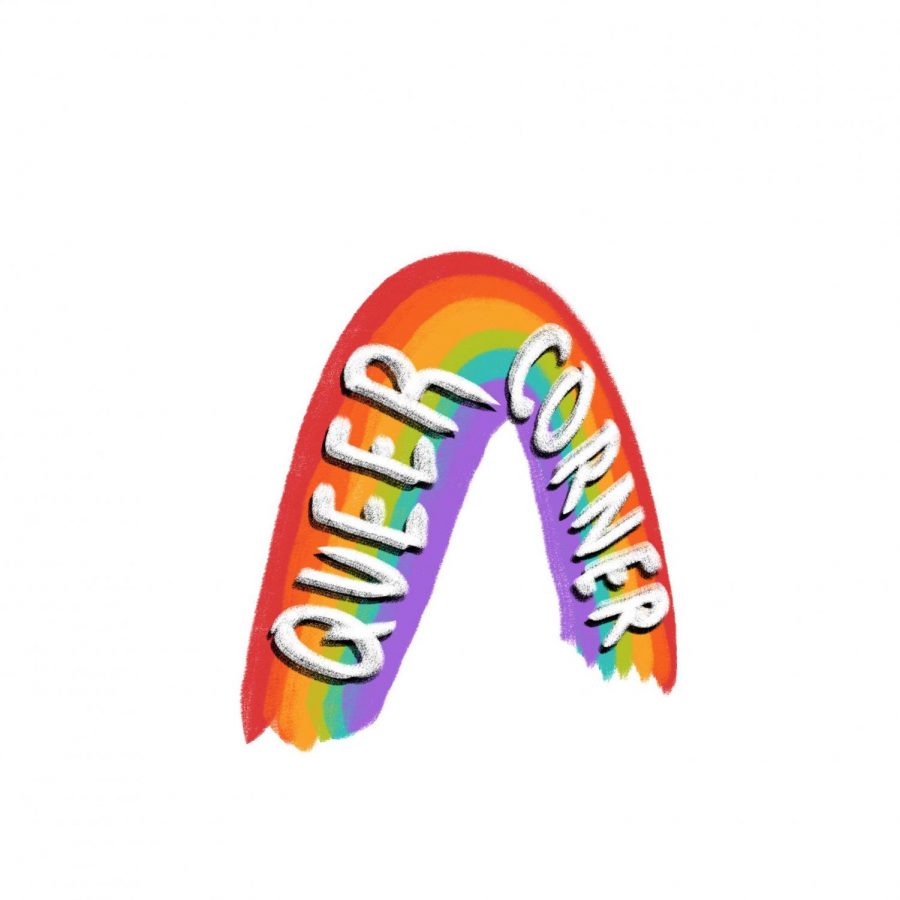The Queer Corner | A Halloween reflection on queer-coded villains
The Queer Corner is a biweekly blog exploring LGBTQ+ community and culture.
October 28, 2021
It’s nearly Halloween, a time to revel in all that goes bump in the night. To carve pumpkins and watch scary movies. To get a little spooky. This is also a time to plan elaborate (and sexy) costumes.
Like so many of us, I scoured the internet for crumbs of costume inspiration. Despite all of my pop culture knowledge, I was drawing a blank. How was I supposed to hedonize horror? To my surprise, our favorite villains already kind of did. I saw animated antagonists in corsets and leather and lace. There were monsters of the week wearing fishnet stockings and cabbie hats. What’s one thing that Disney baddie Ursula and cult classic Frank-N-Furter have in common? They’re both queer.
Well, they’re kind of both queer. Frank-N-Furter has an entire song divulging his gender and sexuality, but Ursula is less LGBT and more “you get what you see.” Her queerness is not explicitly stated. It’s coded into her characterization. While her overarched eyebrows and temptingly deep voice might remind us of a performer at your local drag show, her rainbow flag is under lock and key. So, why are all the bad guys gay?
To understand queer-coded villians, we must first understand what it means to be “queer coded.” In visual media, “coding” refers to the specific choices a piece of media makes to set up audience expectations. This coding extends to everything from set design to characterizations. Our social sexual default is heterosexual. Every character is presumed to be straight unless otherwise specified, so this act of queer coding comes from adding specifics without adding a label.
In the case of Ursula, the subtextual evidence may not be that hidden. With a little digging, you’re able to find her original model — drag queen Divine. In fact, many of our favorite Disney villains are imbued with gay subtext. From Hades’s sarcastic wit to Maleficent’s hard-as-rock cheekbones, the monsters of our childhood have been setting us up to view gay traits as inherently evil and straight ones as good.
That’s not to say no villians can have queer-coded traits. “The Lion King” wouldn’t be nearly as iconic without Scar’s sassy strut or insolent eye rolls. The issue is that we don’t have nearly enough narratives where the hero shucks his masculinity in favor of a feather boa. Imagine if John Smith in “Pocahontas” wore the gold bedazzled cape instead of Governor Ratcliffe. What would it be like to grow up with a butch Jasmine and a toxically masculine Jafar? Subtly, we’re learning that we should fear traits commonly associated with the queer community.
Movie monsters are often thinly veiled metaphors for society’s greatest fears. This is perfectly fine when Godzilla represents the atomic bomb and Frankenstein is “us,” but villains are all too often written in queer people’s image. On their own, queer villians aren’t necessarily harmful. I understand the catharsis of watching queer people commit crimes on screen. This is not an issue of singularities. It’s a problem of our only representation being bad — literally.
Disney villains, while clearly problematic, aren’t the main problem. I’ll admit that queer-coded villians make great Halloween costumes (so go ahead and be your best sexy Captain Hook), but their troubling history is even scarier than their fictional crimes. Stereotypical caricatures of queer people largely contribute to misrepresentations in popular media.
This isn’t an exclusively modern problem, either. Some of the earliest narrative films were “comedies” about men wearing dresses. With little to no positive queer representation on screen, it is increasingly likely that a person’s first exposure to anything remotely gender noncomforming is a character like Buffalo Bill or Norman Bates. Unlike Ursula, these villains aren’t even based on real queer people, despite the myth of the “cross-dressing killer.” They’re fictionalized creations of straight imaginations.
Queer communities aren’t the only ones facing villification. Fictional evil has long been a stand-in for groups on the outside of society. Creatures of the night like the vampire (“Interview with the Vampire,” anyone?) and the werewolf (I’m looking at you, “Teen Wolf”) often represent our deepest cultural fears about queer people. Others, like the witch, reflect society’s stigmas against both Jewish people and women over 40. While dressing up like a Sanderson sister won’t make you antisemitic, you might want to think twice before putting on your prosthetic hooked nose.
Yes, there should definitely be more heroic queer representation made by actual queer people, but there just might be a silver lining in all of this queer coding (no one tell Disney). If you’ve always related more to Hades than Hercules, you might not be evil. You’re probably just gay, and that’s a good thing. Looking back, I’d much rather root for Olympus-destroying Hades than the son of male manipulator Zeus.
So, if you’re anything like me, and you find yourself losing sleep over scary movies or hiding behind your friends at haunted houses, just think on the bright side — at least the monsters are queer. And this Halloween, don’t shriek when you see a ghost. Invite it over for iced coffee and find out its thoughts on Phoebe Bridgers. It’s time to make it good to be gay.
Rachel writes about queer culture, the queer community and navigating life beyond the binary. Talk to them at [email protected].








